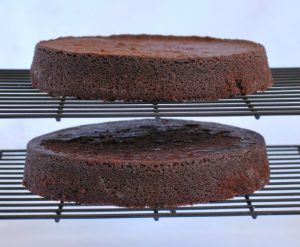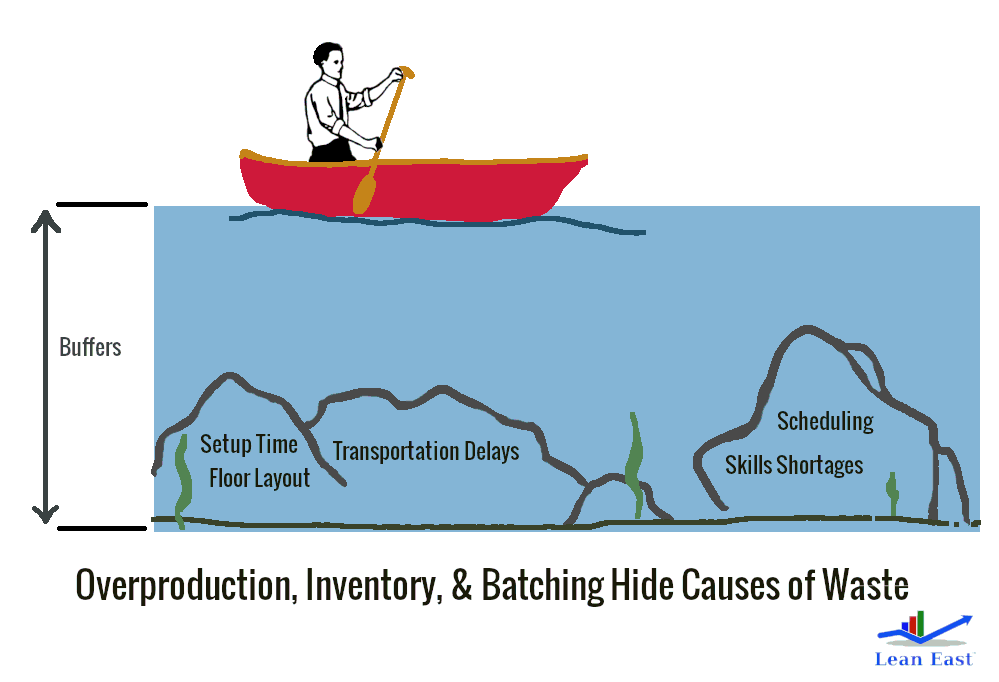Every Lean expert will tell you that continuous flow of value is the goal of a Lean process.
Batching work is the opposite of continuous flow, yet most people batch jobs because they feel it is more efficient.
 For example, if we are baking a cake we may as well bake a second cake while the recipe book is open, all the ingredients are out, and the oven is on. The time for baking two cakes in a batch will be only slightly more than baking a single cake. The average time per cake is, therefore, lower when batching – this is more efficient!
For example, if we are baking a cake we may as well bake a second cake while the recipe book is open, all the ingredients are out, and the oven is on. The time for baking two cakes in a batch will be only slightly more than baking a single cake. The average time per cake is, therefore, lower when batching – this is more efficient!
So if batching is more efficient, are the Lean experts wrong?
Why we batch work
All people, even lean practitioners, batch some of their work. We batch jobs when it is more convenient, and more efficient, to do so. For example, if I need to buy groceries and go to the bank nearby I might combine the stops. Batching in this situation is appropriate and a more efficient use of my time. It also leads to other wastes – in this case waiting for my banking transaction while I have enough on my list to go to the grocery store. Even a grocery stop alone is batching – I don’t know anyone who buys one thing at the store at a time. We often don’t visit for one needed item but wait until we have enough on our list.
 Ususally, we buy multiple items and have multiple stops in the scenario above due to existing wastes in the processes of buying groceries and banking. Most grocery stores require you to select and transport the items to your home. Banks may require you to visit the location to deposit checks or obtain cash. We do these jobs together in one batch to minimize the wastes in the individual processes. If the processes were designed without the waste of transportation, we wouldn’t need to batch.
Ususally, we buy multiple items and have multiple stops in the scenario above due to existing wastes in the processes of buying groceries and banking. Most grocery stores require you to select and transport the items to your home. Banks may require you to visit the location to deposit checks or obtain cash. We do these jobs together in one batch to minimize the wastes in the individual processes. If the processes were designed without the waste of transportation, we wouldn’t need to batch.
Perfect processes (designed without waste) would never benefit from batching. For example, in 2021 I am now able to conduct many of my banking needs using my smartphone. There is no need to delay and batch my trip to the bank with a visit to the grocery store.
We batch due to wastes in the process. Remove the wastes and batching will stop!
Continuous (one-piece) Flow
Flow is the movement of a product or service through a process in a continuous stream of value. A process might have several steps, for example:

One goal of Lean thinking is to always try to achieve continuous flow in a process. Perfect flow is achieved when only value is added, the work between process steps is balanced, and work in progress (WIP) is eliminated. Any mistakes and process issues become obvious in a process designed to flow, and therefore fixed quickly (ideally to root cause, so the issue does not resurface).
A perfect process would not benefit from batching – there would be no efficiency gains from completing two items at the same time. A process without batching flows one-piece through the process at a time.
Batch versus Flow
This short video does an excellent job showing the benefits of one-piece flow. Changing the batch size does not change the total amount of value-added work completed at each step, but one-piece flow (at the bottom) does lead to several key advantages.
- One-piece flow moves each item through the system much quicker. The first item is completed and enters the finished goods area in 6 seconds with one-piece flow and in 42 seconds when a batch size of 10 is used. If a customer is waiting for that first item they will get it much more quickly.
- Work in process inventory (WIP) is nearly eliminated with one-piece flow. There are two items in WIP at any time with one-piece flow and 20 when completing batches of 10. Inventory, including WIP, is a waste that needs to be stored, managed, etc.
- Feedback between work areas is immediate. Imagine that a worker is stationed in each of the work areas above and an inspector is checking specifications before moving to finished goods. Any mistakes in the one-piece flow will be spotted after only 6 seconds, and two pieces of WIP will also need to be corrected. It takes 42 seconds for the first unit to be inspected in the top scenario, and if a defect in the process is found at least 20 products in WIP will need to be fixed!
The counter-intuitive benefit of attempting to Flow
Perfect flow is rarely achieved, even with the best-designed processes in the world, and attempting continuous flow in a poorly designed process leads to many stoppages and an out-of-balance condition. It is therefore typical to use WIP and other buffers in a process to soften the impact of these issues. Even Toyota does this – they split their assembly lines into sections and build small buffers of WIP before and after each section to better deal with minor stoppages.
The problem is that processes with large buffers (often represented by WIP or inventory) minimize the true effect of the wastes in the process. Large buffers are akin to raising the level of water in a stream. Wastes (like rocks in a stream) cause problems, while the buffers hide their impact. The buffers not only hide the other problems but they are a form of waste themselves. Only by lowering the buffer will the wastes become visible so they can be eliminated.
Attempting to flow makes process wastes visible – so the wastes can be addressed and improved.

Continuous Flow Challenge
Take a look at one of your important processes and consider how you could reduce the batch size to one piece. What would need to change? What process issues would prevent you from doing this? These issues are some of the large rocks (wastes) in your current process. When you remove the rocks from the stream you can safely lower the water level. Similarly, when you remove the large wastes in your process you can lower your buffers.
When you understand this post you have learned a key Lean concept. Our continuous improvement workshops include several simulations that demonstrate the difference between Flow and Batch. Click on the link to sign-up for a workshop today!


Related Posts
The God Complex: Why We’re All Making This One Mistake
How I am Changing the Career Advice I Give My Kids
This is Never Going to Work: Getting Lean Projects Unstuck